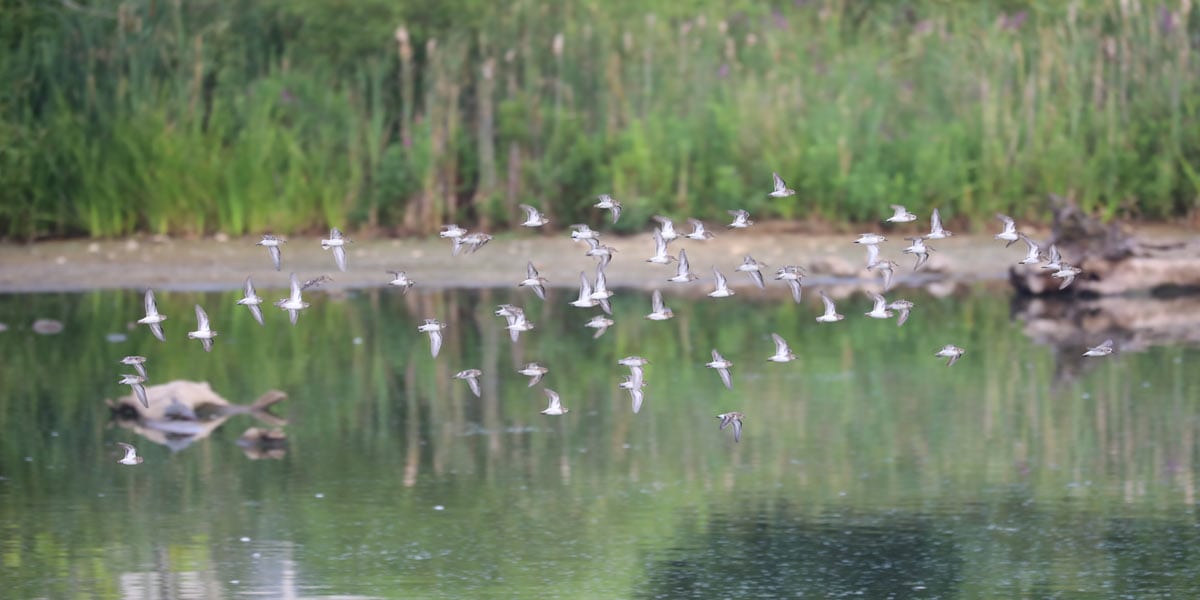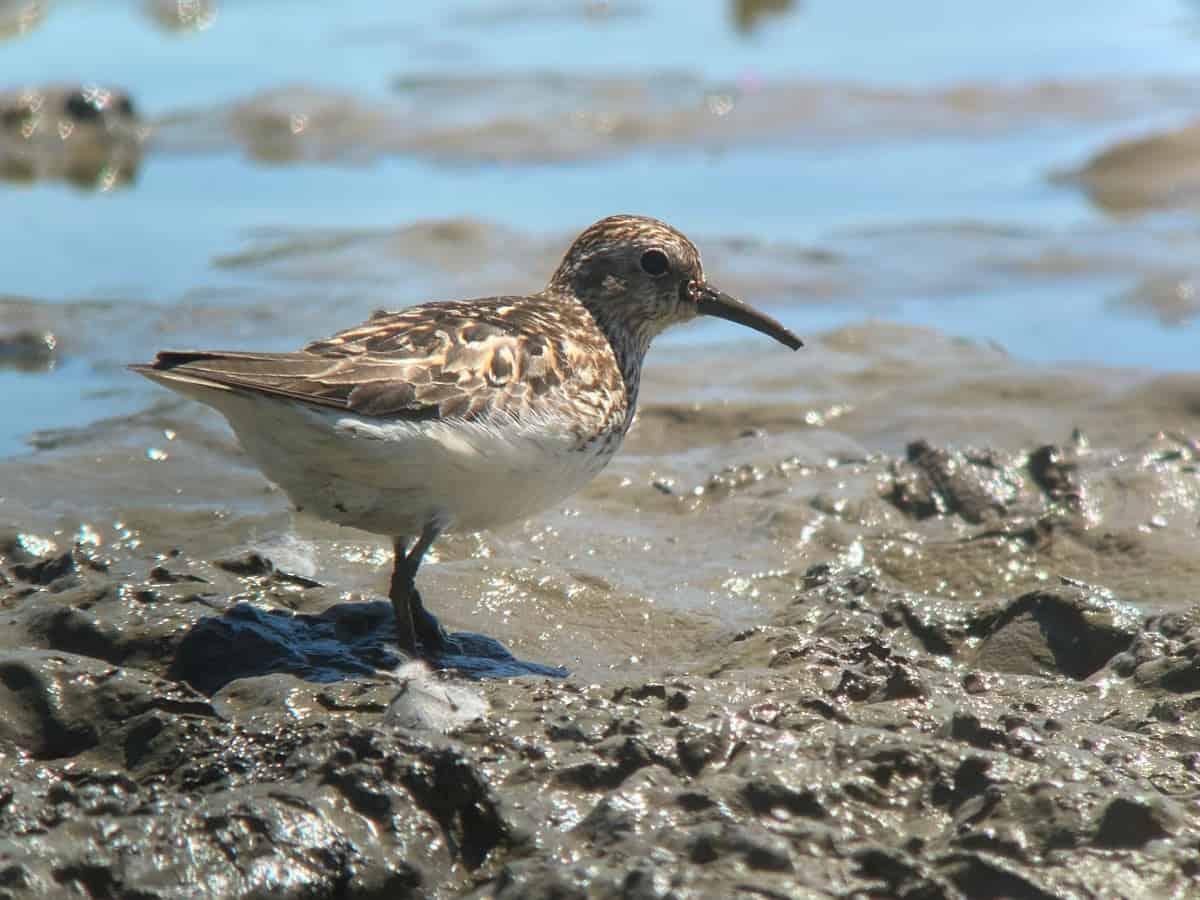Peeps (not the Easter candy): Sandpipers
Fall migration is underway, and some of the earliest migrants are shorebirds like these Least Sandpipers I found last week. As their name suggests, Least Sandpipers are tiny. They weigh in at 0.7 to 1.0 ounce, about the same as a Tufted Titmouse, or less than half the size of a European Starling. There are several species of very small sandpipers that are collectively called “peeps,” for their diminutive size and soft, high-pitched calls.
Least Sandpipers live remarkable lives. Like most other sandpipers, they nest far to the north in the Canadian tundra. Some spend the winter in the southern United States and Mexico, but many fly all the way to northern South America. Look for Least Sandpipers in very shallow water with patches of exposed mud. They’re easiest to find here during their fall migration between late July and early October. Smaller numbers pass through on spring migration in May.
One other species of peep is visible in the photo above. Check out the cluster of five birds in the upper right corner of the photo. The bird farthest to the left in that group of five is a closely related species called a Semipalmated Sandpiper. It is a little more lightly colored, and if you look really close you can see that it has black legs compared to the yellow legs of the Least Sandpipers. Lastly, its bill is shorter and straighter with a more blunt tip.
Peeps (not the Easter candy): Sandpipers
Fall migration is underway, and some of the earliest migrants are shorebirds like these Least Sandpipers I found last week. As their name suggests, Least Sandpipers are tiny. They weigh in at 0.7 to 1.0 ounce, about the same as a Tufted Titmouse, or less than half the size of a European Starling. There are several species of very small sandpipers that are collectively called “peeps,” for their diminutive size and soft, high-pitched calls.
Least Sandpipers live remarkable lives. Like most other sandpipers, they nest far to the north in the Canadian tundra. Some spend the winter in the southern United States and Mexico, but many fly all the way to northern South America. Look for Least Sandpipers in very shallow water with patches of exposed mud. They’re easiest to find here during their fall migration between late July and early October. Smaller numbers pass through on spring migration in May.
One other species of peep is visible in the photo above. Check out the cluster of five birds in the upper right corner of the photo. The bird farthest to the left in that group of five is a closely related species called a Semipalmated Sandpiper. It is a little more lightly colored, and if you look really close you can see that it has black legs compared to the yellow legs of the Least Sandpipers. Lastly, its bill is shorter and straighter with a more blunt tip.
About The Author
Dan Hinnebusch is the Ornithologist for Wild Birds Unlimited. Click to learn more.





